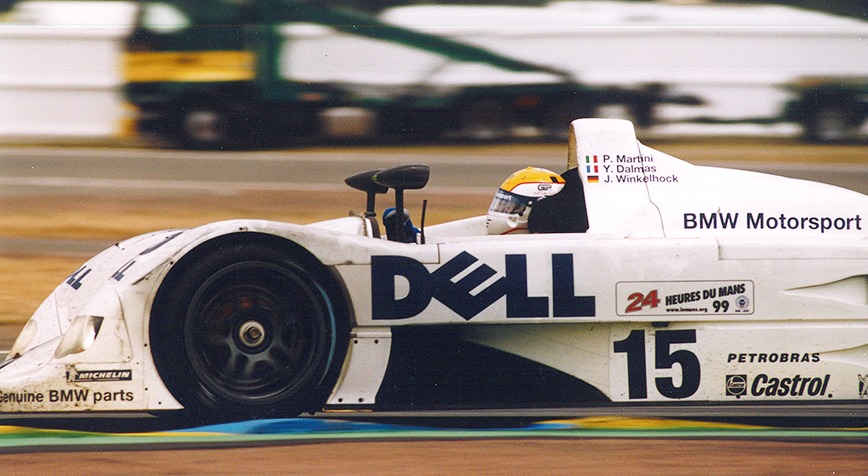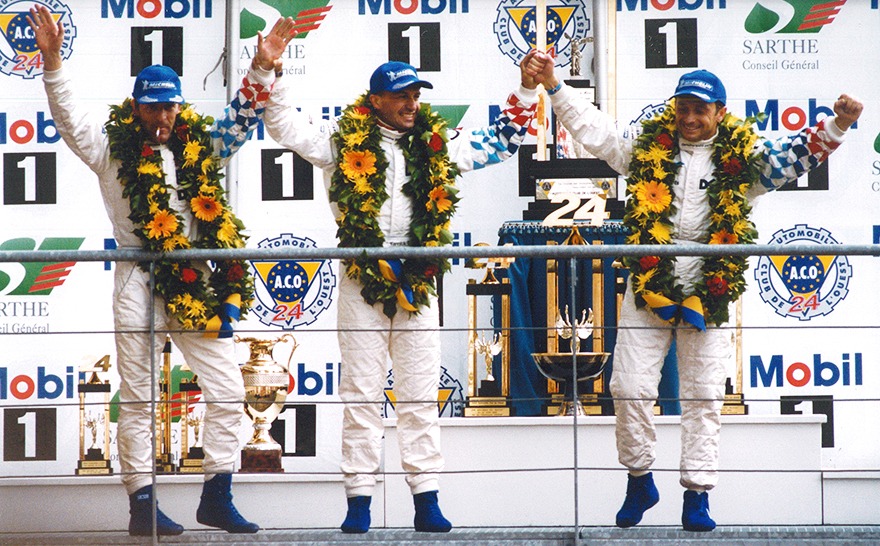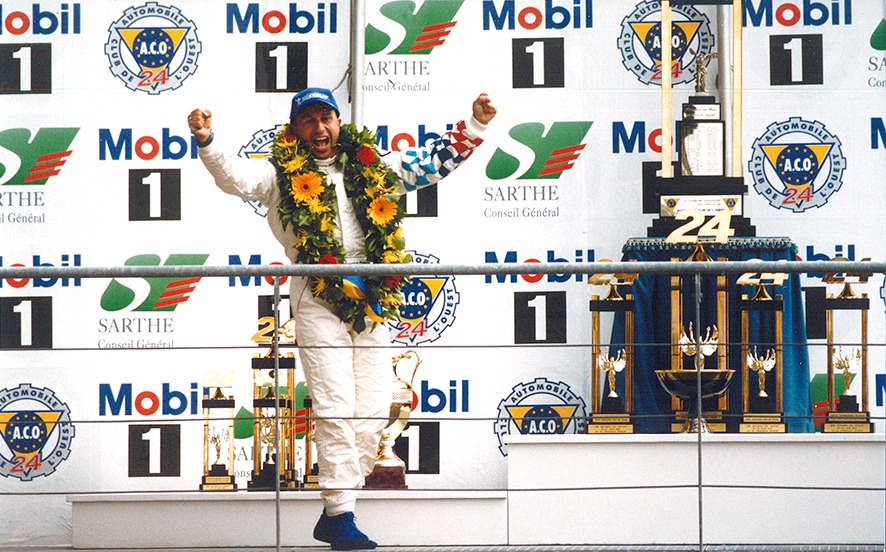
1999

The promise of a real spectacle
The poster chosen to announce this 24 Hours event was warning the spectator even before the race got under way. It is a first choice automotive platform which has been positioned at the head of the gondola for this year, 1999.
There were 45 cars on the starting grid, representing six nationalities and fourteen manufacturers. Toyota, Chrysler, Mercedes, Nissan, BMW can all claim victory and, among the beginners, a German neophyte destined for a great destiny is waiting to be unleashed, Audi.
The race got under way but nobody was pulling clear. The competitors would exchange the lead during pit stops. Toyota, Mercedes and BMW cars however seemed a little bit better equipped to play these games.

The unthinkable miracle
Shortly before 9pm as the Mercedes driven by Peter Dumbreck was hot on the heels of a Toyota, the front of the car took off until it reached the tops of the trees, spun around four times, and then crashed on the other side of the reservation in the forest close to the Indianapolis bend. It is one of the most striking images in the history of the 24 Hours and one of the accidents which created the biggest impression in the history of motor racing.
The car miraculously landed on its wheels and the driver escaped unscathed. The curtains of the stands of the three Mercedes fell down six hours after the race had started. The constructor had decided to give in.
BMW in the firmament
Two of the BMWs found themselves in the lead at the midway stage of the race. While the no. 17 quietly took the lead, a technical complication led to it becoming disqualified. The field was then clear for the no. 15 of Martini, Dalmas and Winkelhock, however, the surviving Toyota was breaking lap records and getting back on track. The Japanese car then suffered a puncture just 22 seconds when driving in the middle of a straight line. With great skill, his driver somehow managed to return to his pits but the fate of the race had been sealed. The trio of no. 15 was able to exult.

BMW marks its first and only victory at Le Mans. It was also a first for Pierluigi Martini and Joachim Winkelhock. Yannick Dalmas equalled the records set by Henri Pescarolo and Olivier Gendebien. He also reached an unprecedented feat: winning Le Mans four times with four different manufacturers. He was the winner in 1992, 1994, 1995 and in 1999, and has the best record at Le Mans during the 1990s.


It was Joan Hall, the Australian Minister of Tourism, who started the race in 1999. She is the second woman, eight years after Hélène Blanc, the prefect of Sarthe, who brandished the blue, white and red flag for the 1991 event.
The latter is also the third, it was Princess Charlene of Monaco who started the race in 2019.

American concept artist Jenny Holzer was selected to decorate one of the BMW V12 LMRs (the model that won the race that year) some twenty years after the last official BMW Art Car took part in the Le Mans 24 Hours in 1979.
True to his refined style, the artist used letters to convey a message and to highlight the purity of the lines of the prototype.